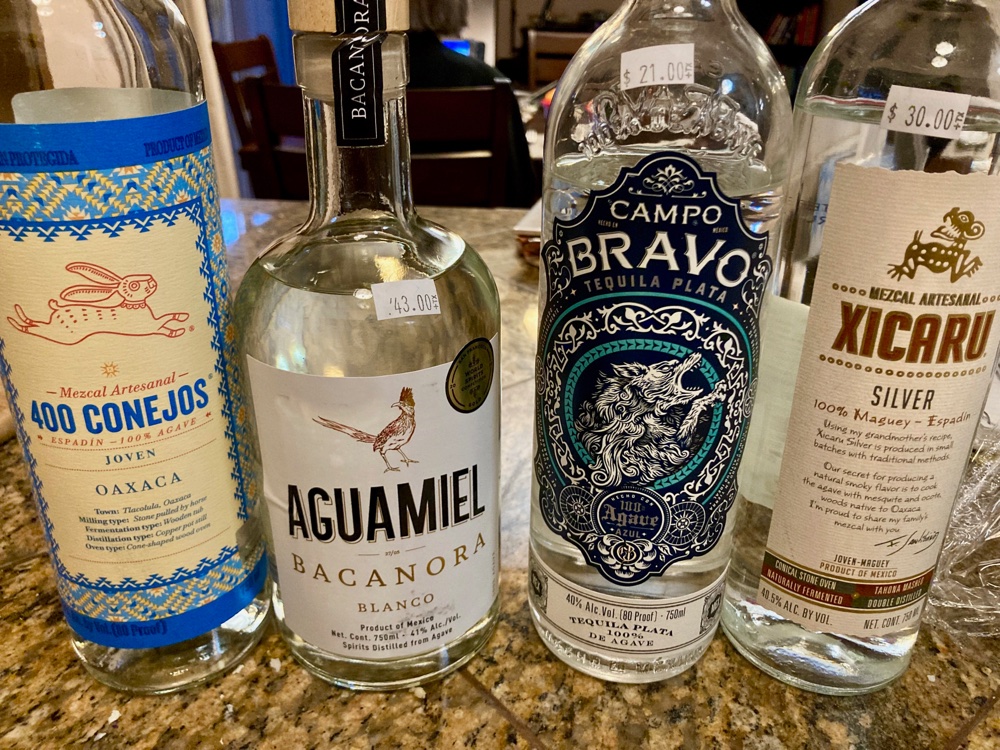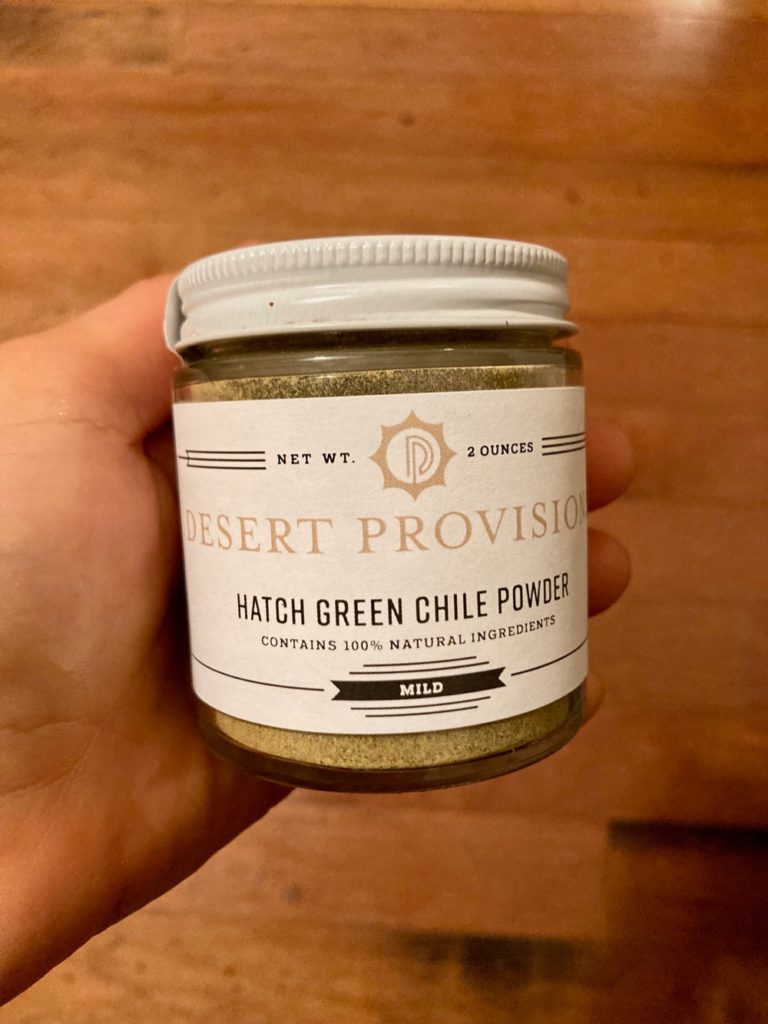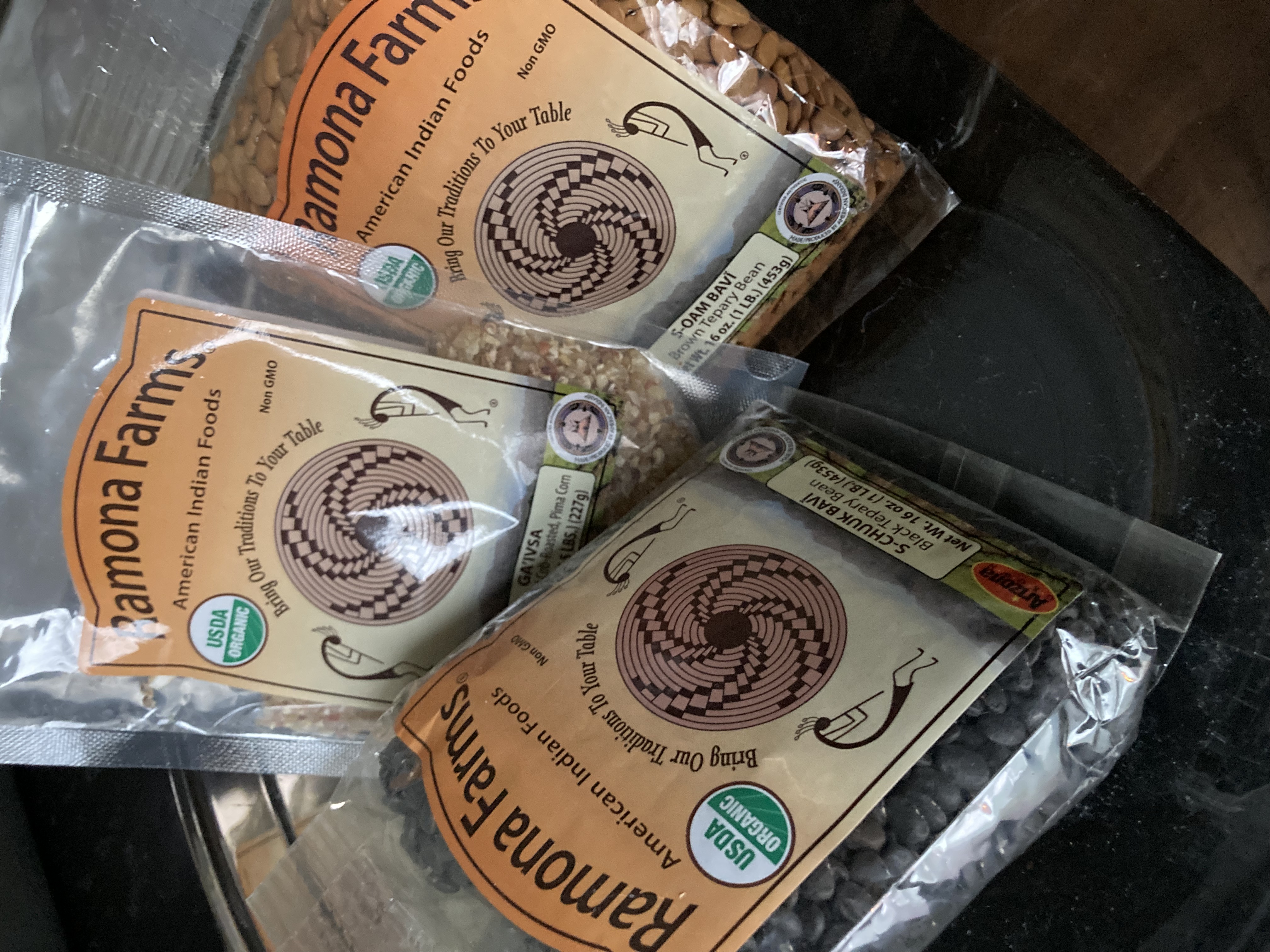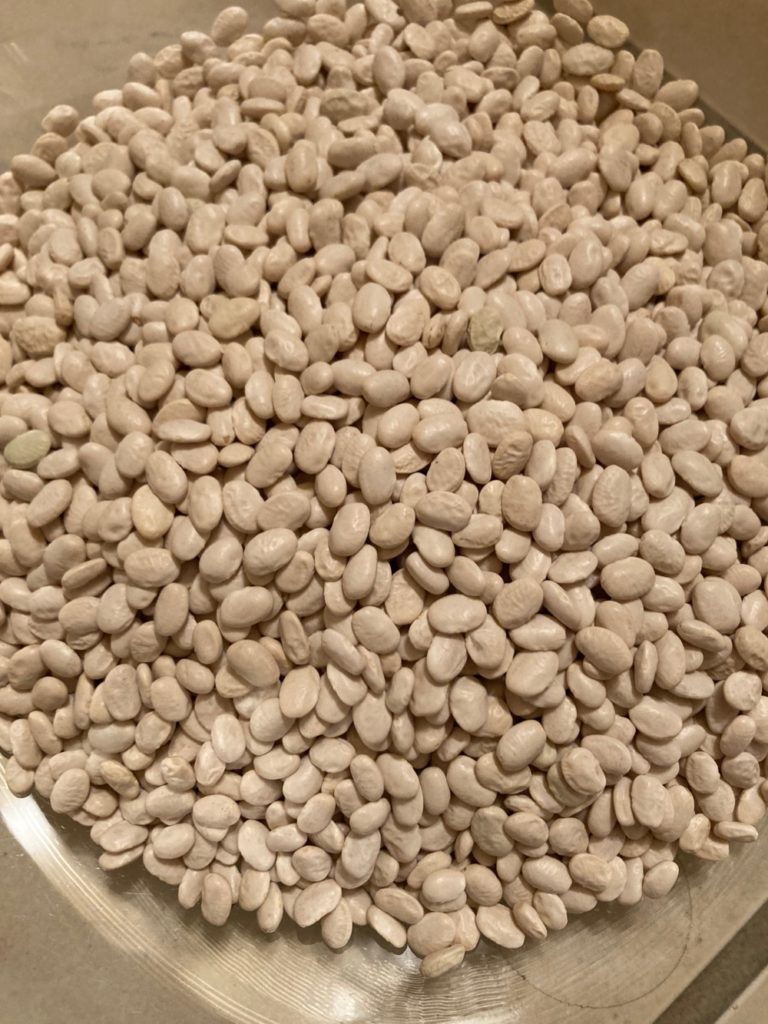
I should split this post into three posts, to give the Mezcal, Tequila, and Bacanora I tried room to shine, but instead, I’m going to think of agave-based booze, high-protein Arizona tepary beans, and sweet-and-subtly spicy green hatch chili powder as the three brothers of Tucson, AZ. And I’ll start with the drinks.
Tequila, Bacanora, and Mezcal
You’ve definitely heard of Tequila. You’ve probably heard of Mezcal. But you might not have heard of Bacanora. Tequila is a distilled alcohol, generally white, sometimes golden with age, made in the Tequila area of Mexico from blue agave. Tequila is a type of Mezcal, which is basically just any alcohol distilled from agave – any kind of agave (there are a lot), made anywhere, but generally made in Mexico. A lot of people associate Mezcal with smokiness from the agave hearts being cooked in pits with wood and charcoal (as opposed to Tequila, which is steamed in ovens), but it’s not always smoky, and the smokiness varies. A lot of people like the smokiness, though, and seek it out. I’m a mid-smoke kind of mezcal gal, and it’s taken some time to get that far. What makes Mezcal interesting from a tasting perspective is that all the different types of agave and different types of wood create a lot more variety than Tequila, which can already be very diverse.

But then there’s Bacanora, essentially the moonshine of Sonora, Mexico. Actually, it’s just a particular type of Mezcal made in the northwest part of Mexico and the Sonoran desert part of Arizona, I believe. the ones I’ve tried have been a little less smooth, a little less smoky, but I’ve only tried a couple. So I went to Plaza Liquors, home to an exceptional selection accompanied by employee notes, because if you’re going to invest in a couple bottles, you want some advice.

I also surveyed by Arizona climbing friends and added 400 Coñejos, an artisanal Mezcal, to my list.

This is what I got:

The 400 Coñejos was definitely my favourite. It was also the most expensive. It was just sweet enough, it was just smoky enough, it burned just enough but was mostly smooth, and it had enough character to sip on its own. I couldn’t tell you too much about the smell or botanicals because every time I try to smell these things they burn my nostrils from the high proof. But the tiniest sip felt luxurious.
The Aguamiel Bacanora Blanco was a tiny bit more acidic, maybe, and no smoke, but also a bit more dry – especially compared to the Campo Bravo Tequila, which was cheap at $21 USD and perfect for making margaritas. On its own, it was sweet, and adding a tiny bit of lime or orange brought out its fruitiness. Basically, it was made for Cointreau.
The Xicaru was another Mezcal I’d read good things about. I’d wanted to try it because it used 100% Maguey wood for the cooking, and I wondered what that would taste like. Espadín is a very common type of agave for Mezcal, so at least I figured I’d be able to isolate what the wood was adding. Unfortunately, I’m not a tree expert in my Mezcal. I found it a bit more biting than the 400 Coñejos.
These are all worth checking out. I should note that there are sustainability issues in agave, with how much is harvested, so ask some questions when you buy. I’m not 100% sure about all of these, but I did ask at least.
You’ll notice I don’t have any reposados there, all young or joven. I don’t like the aged ones as much, it turns out, I like a more pure flavour, which is better for me because the young ones are less expensive anyway!
One of my best agave-related ideas while in Tucson was lining the rim of my glass with green hatch chili powder and salt. I went out of my way to find the green hatch powder from Desert Provisions. I went on a big hunt for it and ended up finding it at Food Conspiracy Co-op in downtown Tucson. I found another green hatch chili powder in bulk, but it had no flavour. Desert Provision’s green hatch chili powder was twice as expensive but a a world better. It’s sweet and really tastes like green hatch chilis, instead of just being mildly and ambiguously spicy. Besides having it with margaritas, my favourite thing to do with it is sprinkle it on salted popcorn. It’s heaven.

Tepary Beans: High Protein Arizona Beans
When I first heard about tepary beans while looking into native plants in Arizona, I thought they were genius. They’re high protein, low starch beans that grow well in the desert. There are black, white and brown ones, and again I found them at Food Conspiracy Co-op. They used to be available at Native Seed/Search, but no longer since they shut their retail store. You can find out where you can get the beans and corn on the Ramona Farms website, though.

I love this company. Preserving heritage seeds is dear to my heart. That’s also why I bought the Pima corn, ground to somewhere around a large grits level. I didn’t want the full corn kernels, but didn’t want corn flour, so this was the perfect breakfast cereal.
Both the corn and the beans take forever to boil (I think the beans take longer because of the high protein content), but the beans are especially good because the high protein also helps them retain their shape, I think. After 1.5 hours of boiling they were al dente. There’s not a ton of flavour to them, but you’re eating them for their nutritional benefits, including the super high fibre and low calories. I compared them with chickpeas, pinto beans, black beans, and split peas at the Co-op, and these won out for nutritional bang for your buck, I felt.

What did I do with them? I added them to salads with heaps of parsley and cilantro, chopped tomatoes and peppers, lime juice, salt, and pepper. Once I also made hummus by adding tahini, lemon juice, salt, pepper, and green onions, with a pinch of cumin and a generous dousing of smoked paprika or green hatch chili powder on top. I probably ate the chili pepper-ed beans with Mezcal.
Smoke and smoke. The brothers, at their best.
Leave a Reply